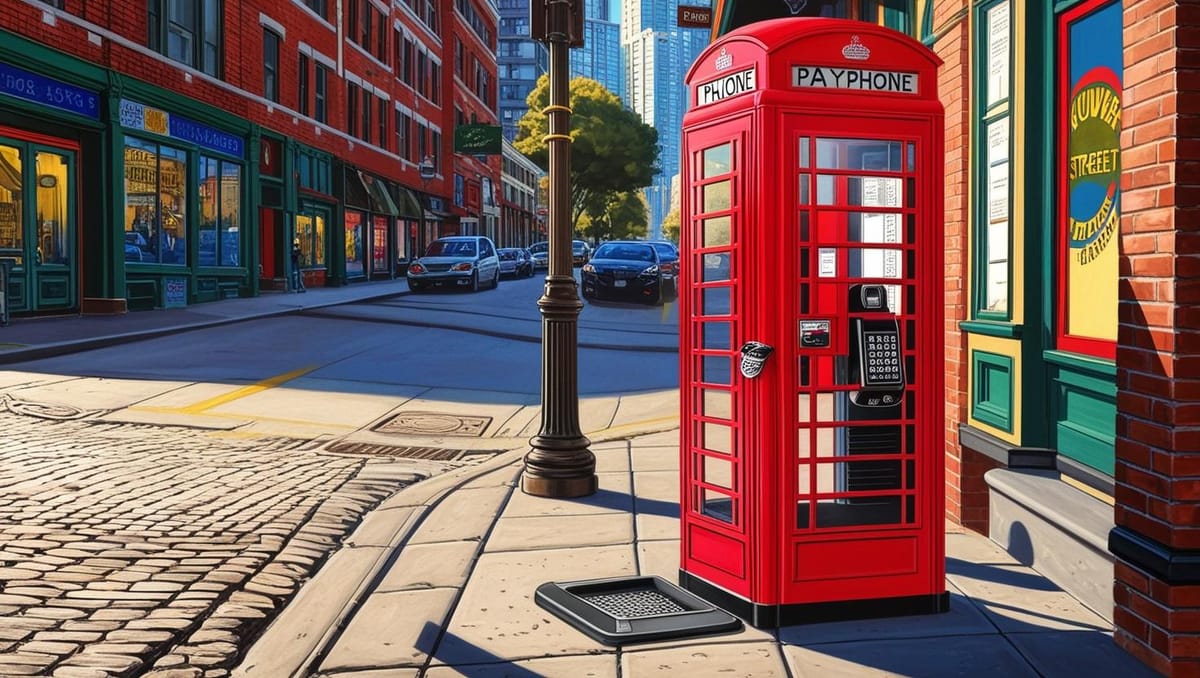
Vancouver, BC - March 19, 2025 - In the rapid march toward a digital-only future, rare remnants of Vancouver’s analog past still serve as lifelines for some residents. Public telephone booths, once a vital part of the city’s infrastructure, have nearly vanished. Today, only two working payphones reportedly remain in downtown Vancouver—one at the Ivanhoe Hotel in Strathcona and another on the Downtown Eastside at the Overdose Prevention Site (OPS). These nostalgic symbols recall a time when a few coins and a memorized number were all one needed to connect.
The Past: A Network of Necessity
At their peak in the early 1990s, British Columbia and Alberta hosted around 38,000 payphones, with thousands scattered across Metro Vancouver. In the mid-20th century, phone booths—often sleek glass-and-metal enclosures—lined streets, transit hubs, and corner stores. They bridged gaps for those without private lines, evolving from operator-assisted calls to automatic dialing. Vancouver’s streets buzzed with exchanges like Kerrisdale, later replaced by seven-digit numbers, making payphones a cornerstone of daily life.
Interesting Note: We always associate Superman with phone booths, but this connection isn't entirely accurate. Although Jerry Siegel and Joe Shuster, the creators of Superman, featured a phone booth for Clark Kent to change into Superman in a Sunday newspaper comic strip in late 1942, it was one of the few times he did so. In that strip, Clark, observing a need for Superman, excuses himself from Lois by pretending to receive a phone call. Inside the phone booth, he remarks, "This definitely isn't the most comfortable place in the world to switch garments, but I've got to change identities—and in a hurry!" While the iconic image of Superman changing in a phone booth has been etched in our collective memory, it didn’t actually carry over when Superman transitioned to television, where there were plenty of other places for him to change. The association persists, but it doesn't accurately reflect the full range of his transformations into the hero the world admired.
The Present: A Lifeline for the Few
Today, mobile phones have rendered payphones obsolete for most. In 2019, Telus reported 349 payphones in Metro Vancouver, while Bell had just 13 in Vancouver proper—numbers that have since dwindled further. The Ivanhoe Hotel, a 1900s relic turned backpacker’s hostel, houses one survivor. On its ground floor, a Telus payphone charges 50 cents per call and sees steady use. “It has a dial tone and everything, and people keep pumping quarters into it,” a bartender at the Ivanhoe Pub noted. The other, on the Eastside, supports a community where cell phones aren’t guaranteed.
For Stanley Woodvine, a 63-year-old former graphic designer who has faced over two decades of homelessness, finding a working payphone was a shock. “I can’t believe it,” he said, recalling how he once relied on a crowd-sourced Google map to locate payphones while sleeping in a car park. “I used it to make calls all the time,” he added, staying connected to loved ones. Now, he sees their decline impacting homeless residents dependent on nonprofit courtesy phones.
The Future: Fading Away
Payphones are disappearing as telecoms like Telus phase them out, citing minimal revenue. Some have been scrapped; others linger as urban ghosts. Their future may lie in museums or as repurposed curiosities, like the U.K.’s red phone boxes. For now, Vancouver’s last two endure. You should try them before they’re just in a museum.
#Public Phone #Vancouver History #Urban Nostalgia #Payphones #Digital Age #Van City #WBN News Vancouver #Elke Porter
Connect with Elke at Westcoast German Media or on LinkedIn: Elke Porter or contact her on WhatsApp/Text: +1 604 828 8788


